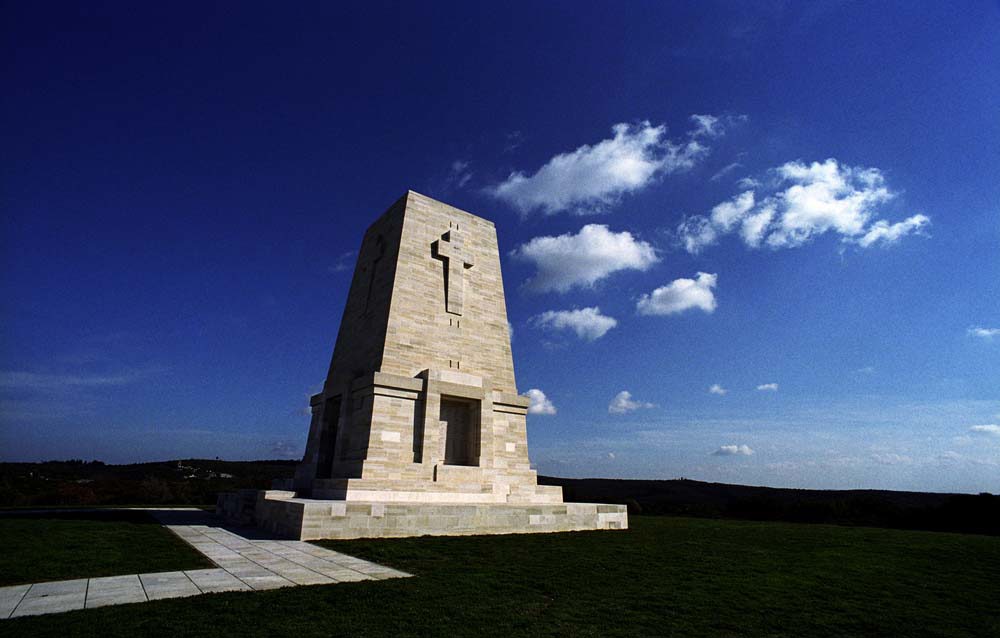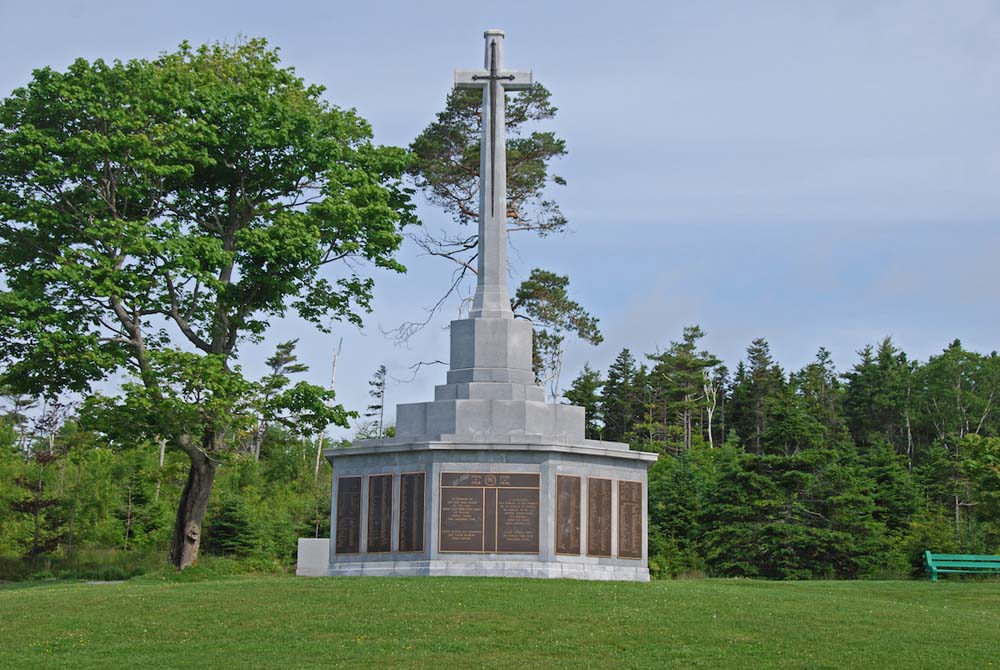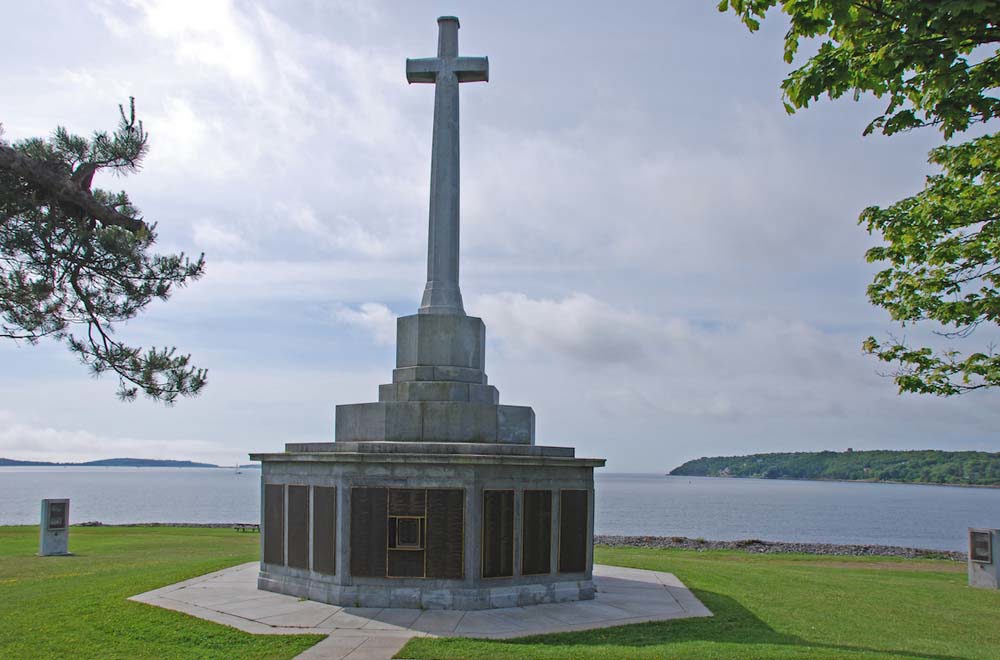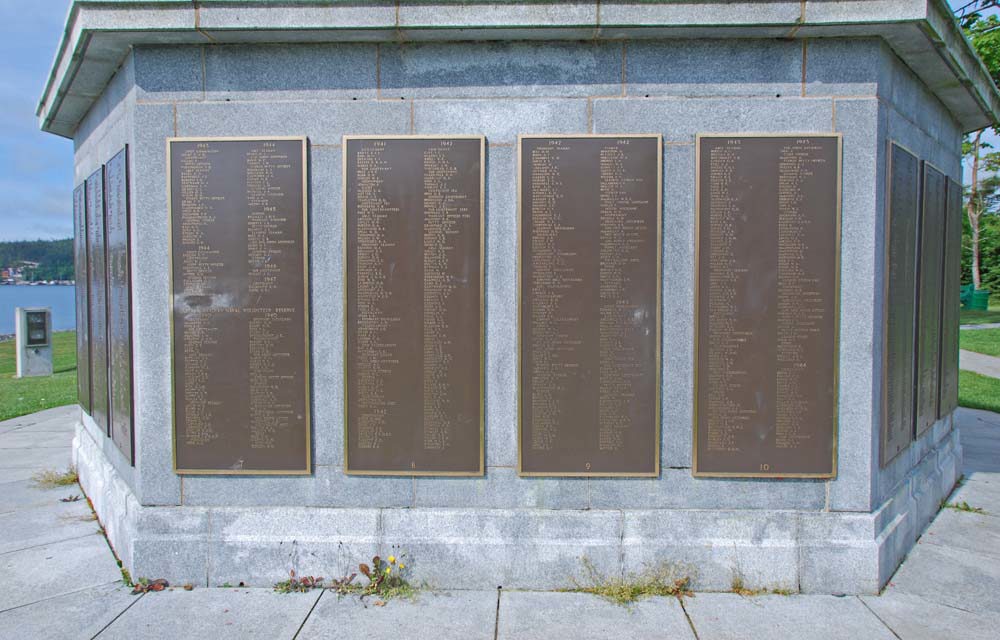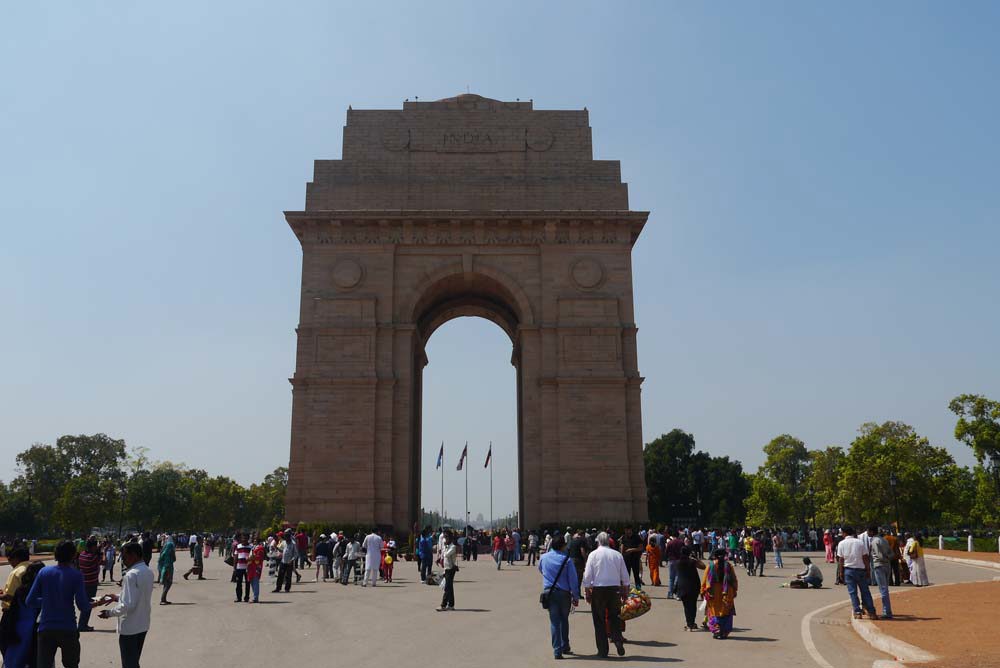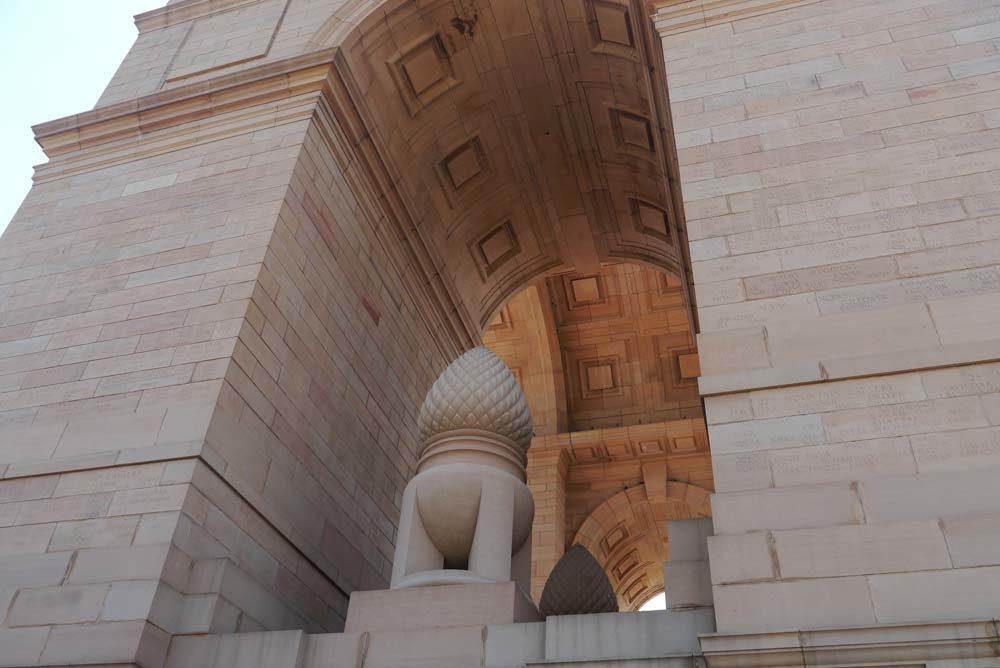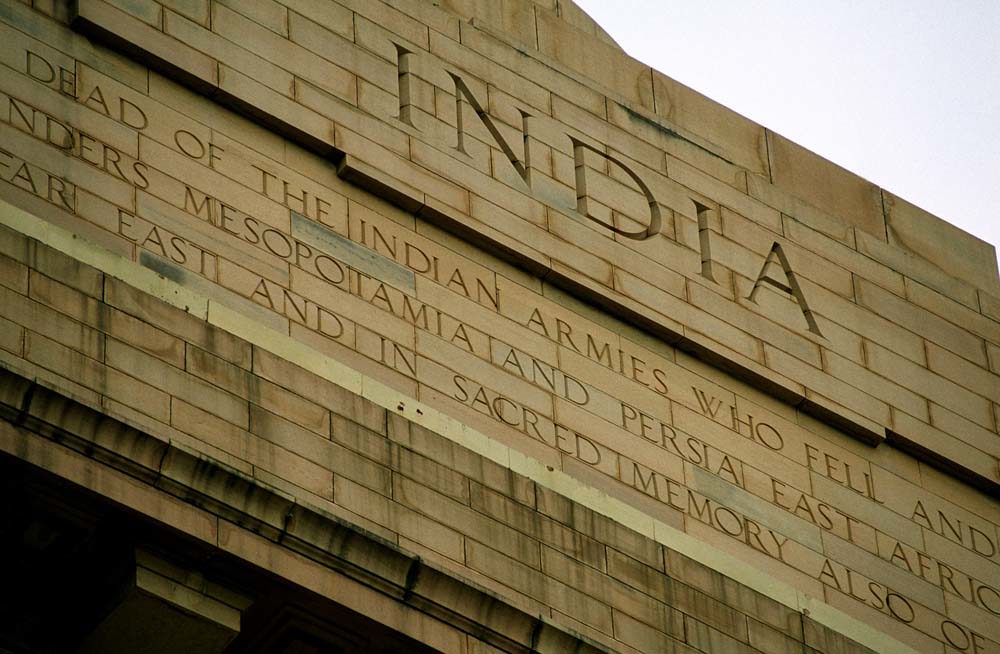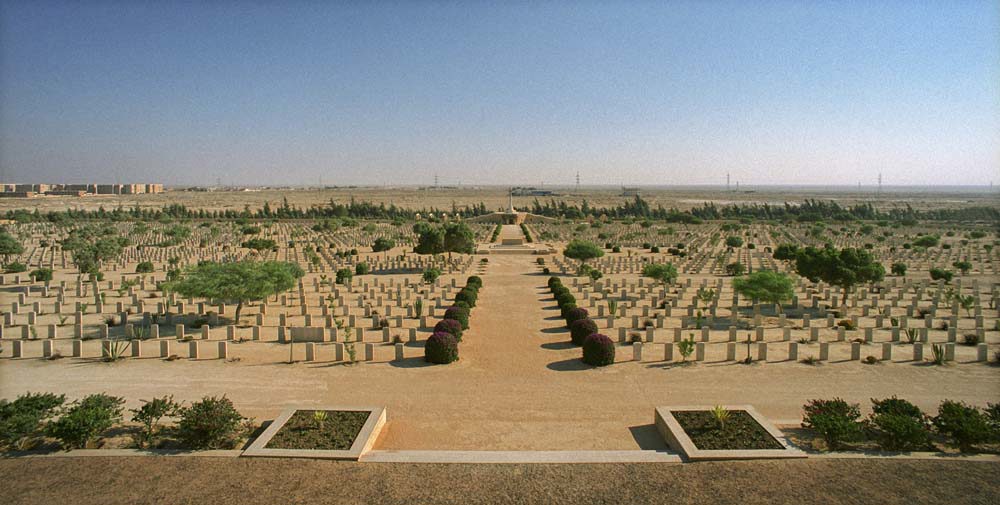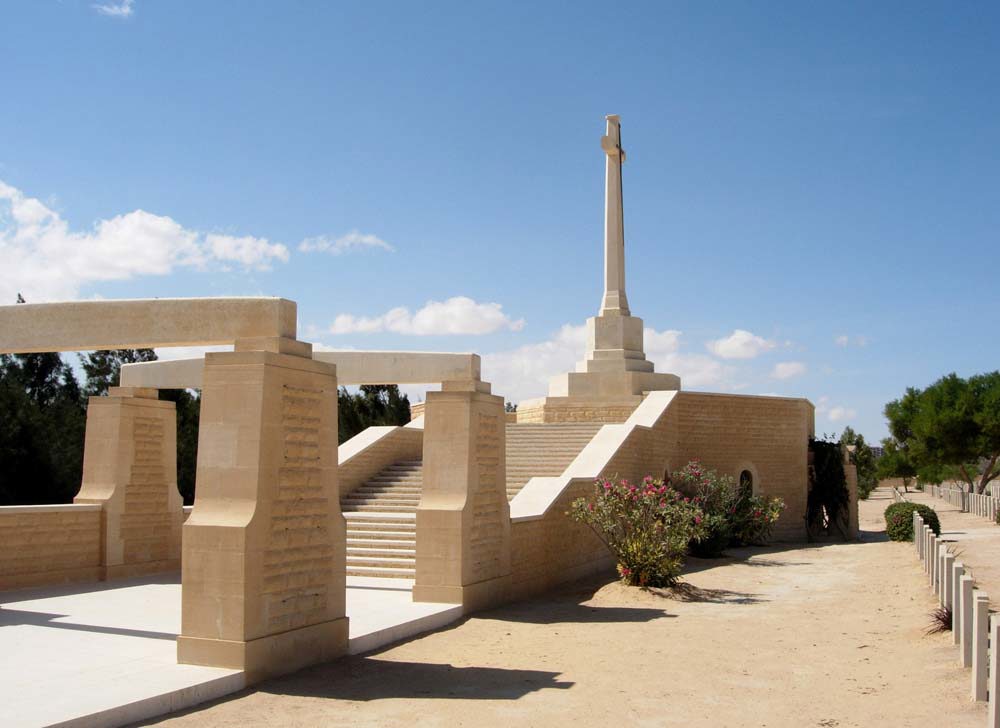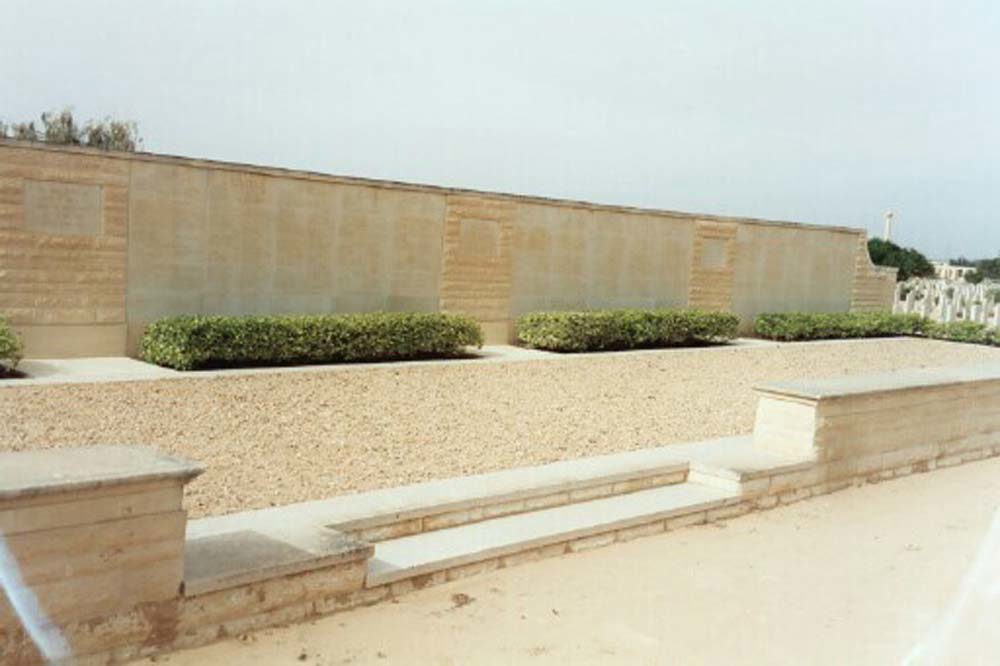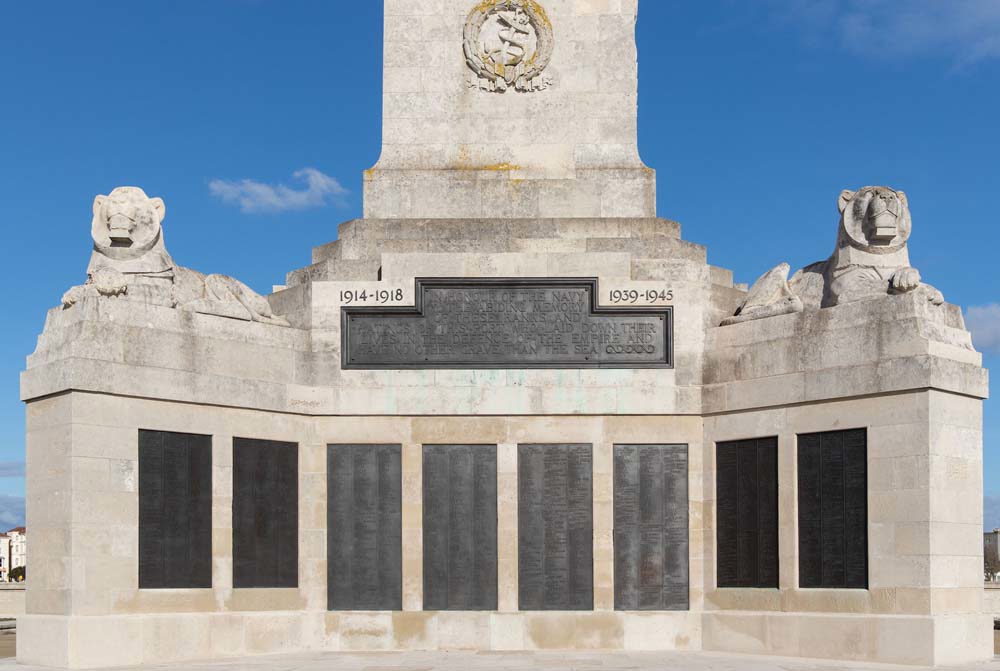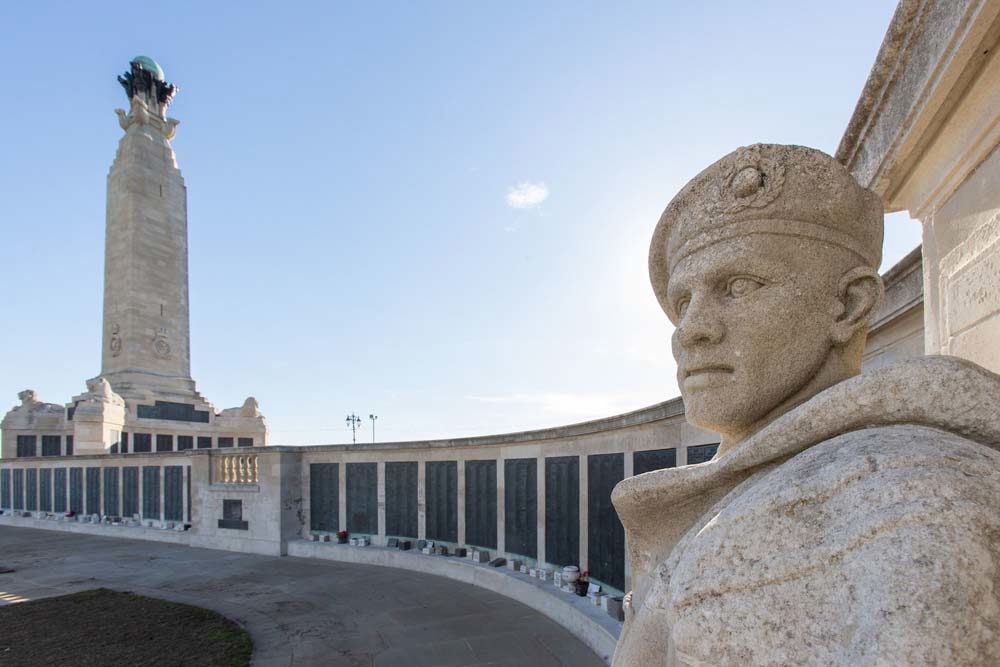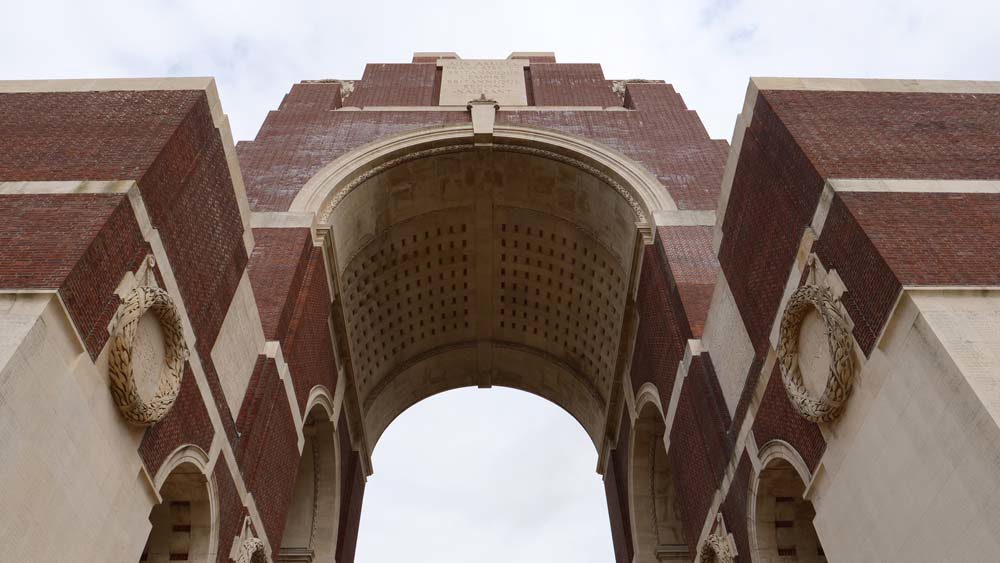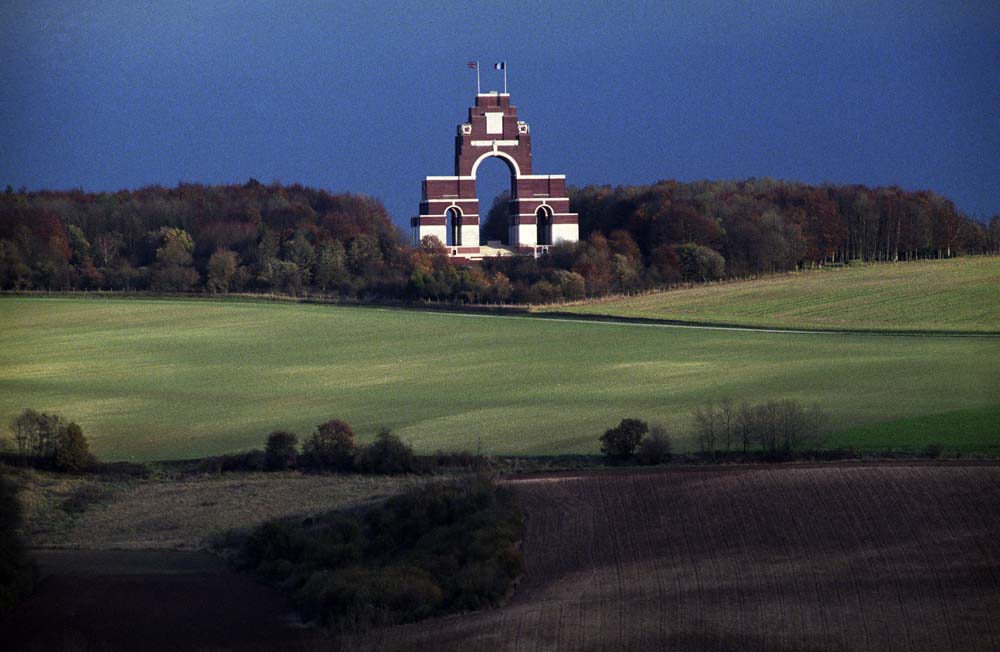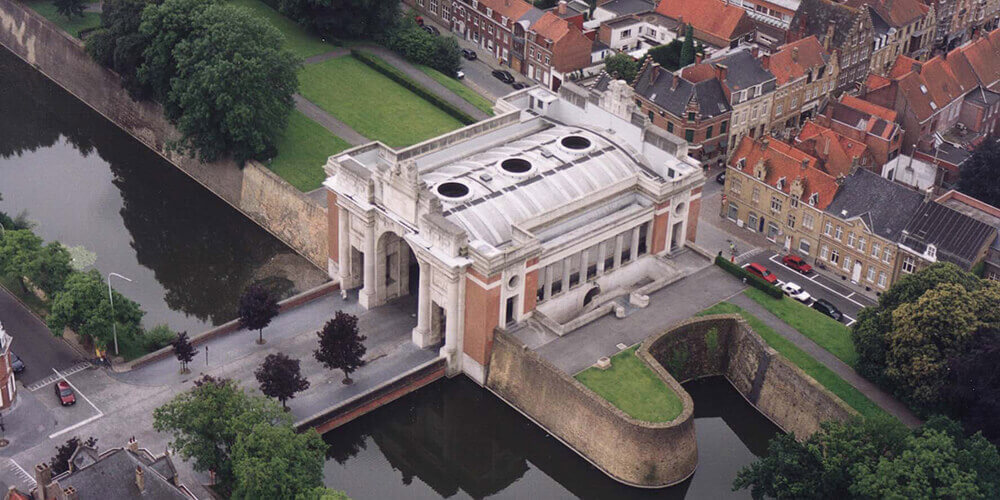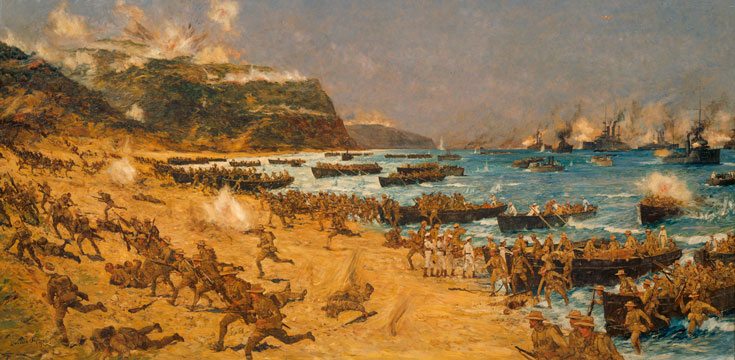14 March 2022
Iconic Commonwealth war memorials around the world
For Commonwealth Day 2022, we’ve selected just a handful of the monuments, cemeteries and war memorials around the world that represent the outstanding contribution and sacrifice people from across the Commonwealth made during World War One and Two.
Famous war memorials around the world
Discover some of the iconic Commonwealth war cemeteries and memorials dedicated to the men and women of World War history…
Lone Pine ANZAC Cemetery, Gallipoli
Australians are renowned for their heroic service and tough, no-nonsense resilience in action. The CWGC commemorates more than 102,000 members of the Australian forces who died during the two World Wars: 62,000 in the First, and 40,000 in the Second.
They saw action across the world during both conflicts, from trial by fire on the beaches of Gallipoli to the trenches of the Western Front, and from the deserts of North Africa to the jungles of Papua New Guinea.
Perhaps their most iconic actions came during World War One on the Gallipoli peninsula. Australians, alongside their compatriots from New Zealand, India, Canada and the UK, found themselves in relentless fighting amongst the machine gun swept cliffs and gullies of Gallipoli. The actions of the Australian troops that fought here have passed into legend, becoming part of Australia’s national identity.
A series of cemeteries and memorials are dotted across the Gallipoli Peninsula. At Lone Pine Cemetery, almost 650 Australian servicemen lie at rest, while over 4,200 Australian soldiers who have no known grave are commemorated by name on the Lone Pine Memorial.
Halifax Memorial, Canada
The maple leaf is the symbol of Canada, and it was carried into battle by Canadian soldiers during both world wars, emblazoned on their uniforms and equipment. Today, the maple leaf marks the headstones of Canadian service personnel who are buried in CWGC cemeteries around the world. 110,000 Canadians died during the world wars: 65,000 in the first, and 45,000 in the second.
Canadians fought in many of the most famous engagements of both world wars and memorials on Vimy Ridge, in Ypres and in Normandy, to name but a few, record their sacrifice, but many today do not know that Canada played a vital role in keeping the vital Atlantic sea lanes open in World War One and Two.
The Halifax Memorial, looking out to sea in the Point Pleasant Park in Nova Scotia, is a monument to the women and men who were lost during Canadian naval operations. Those commemorated here include sailors, merchant seamen, nursing sisters, and more who lost their lives at sea and have no known grave.
Unveiled in 1967, it commemorates almost 3,150 Canadian and Commonwealth service people.
Delhi Gate, India
Field Marshal Claude Auchinleck once stated that the Commonwealth couldn’t have come through both World Wars without the Indian Army. Their contribution was huge. During World War One the British Indian army grew from some 150,000 in 1914 to nearly 1.4 million by 1918, with more than one million serving overseas. During the Second World War, the Indian Army was the largest volunteer force in history, with over 2.5 million personnel in service.
Throughout both world wars, Indian troops from many backgrounds, faiths and regions fought with distinction and courage. India’s contribution to eventual Allied victory in both conflicts cannot be overstated. The scale of Indians’ contribution came at a high cost, and today the CWGC commemorates 161,000 members of Indian forces who died during the two world wars: 74,000 in the first, and 87,000 in the second.
Standing proudly in downtown Delhi is the Delhi Memorial (India Gate). The memorial is one of the most recognisable structures in the city and was unveiled in 1931 to serve as a focal point of remembrance of the tens of thousands of soldiers from Undivided India who served and died during World War One.
El Alamein War Cemetery, Egypt
New Zealanders played a vital part in operations during both World Wars. For example, did you know that New Zealanders were involved on air, land, and sea all but three of the Second World Wars 2,179 days? Today, the CWGC commemorates almost 30,000 members of New Zealand forces who died during the two world wars: 18,000 in the first, and 12,000 in the second.
New Zealand troops were crucial in actions all over the globe. Certainly, the tumultuous battles of the North Africa campaign of 1940-43 couldn’t have been won without their grit, skill and sacrifice.
The 2nd New Zealand Division was at the heart of the Allied effort, especially at the titanic Battles of El Alamein in 1942. Three Kiwis – Charles Upham, Keith Elliot and Te Moananui-a-Kiwa Ngarimu, gained Victorian Crosses during these desert clashes.
With New Zealand forces at the tip of the spear, British and Commonwealth forces under Field Marshal Montgomery were able to smash through German lines and kick them out of Egypt. New Zealanders would be key to bringing the North African campaign to a successful close in 1943.
The scale of their sacrifice in the deserts of North Africa can be vividly seen in
El Alamein War Cemetery where more than 1,000 New Zealanders lie at rest in our war graves.
World War Memorials in Europe and the UK
Castiglione South African Cemetery, Italy
The CWGC commemorates more than 23,000 members of South African forces who died during the two world wars: 11,300 in the first, and 12,000 in the second. During both conflicts, South Africans served all over the world and in many roles: in the infantry and artillery, in the air and at sea, in nursing and medical services and in labour corps. Many died fighting far from their home country and their contribution to the Allied war effort was dramatic and significant.
From the mud and mire of the Great War’s Western Front to the blistering heat of North Africa and elsewhere, you’ll find a South African war grave. In this case, we’re focussing on the efforts of South African soldiers in the Allied push through Italy during World War Two.
Mountainous terrain and harsh weather turned the push from South to North into a long slog. The South Africans, particularly the 6th Armoured Division, played a vital role in the liberation of Rome and battles on the heavily defended Gothic Line around Florence and Bologna.
The 6th Armoured entered Castiglione, some 60km north of Florence, in September 1944 and stayed until the following April. They had been instrumental in freeing Italy from German occupation.
Castiglione South African Cemetery, situated in the picturesque Bolognese hills, is the final resting place of over 500 Commonwealth servicemen, including more than 400 South Africans.
Portsmouth Naval Memorial, UK
The Royal Navy’s reach during both World War One and Two was tremendous. All of the world’s oceans would have witnessed a British or Commonwealth ship passing through or fighting at some stage of these two conflicts.
Whether off the sun-baked coasts of Pacific islands, dodging ice flows in arctic seas, or sailing across the stormy Atlantic, the Royal Navy and its multicultural sailors were seemingly everywhere. Tragically, due to the nature of naval warfare, the bulk of sailors lost at sea have no known grave.
The Portsmouth Naval Memorial was built to commemorate over 10,000 World War One service personnel and was later extended to commemorate more than 15,000 of World War Two. The Memorial’s central obelisk stands sentinel on Southsea Common, a permanent reminder of the men and women who sailed from Portsmouth, never to return.
Thiepval Memorial, France
Edwin Luyten’s design, with its intricate arches and robust red brickwork, has become symbolic of the fighting on the Somme during World War One. The memorial stands in tribute to more than 72,000 British and South African soldiers who died in the Somme sector during World War One.
The Somme has become synonymous with the Great War. It was one of the toughest, bloodiest campaigns of the conflict The first day - 1 July 1916 - remains the bloodiest day in British military history with almost 20,000 men killed.
By November, British, French and German forces had suffered over one million casualties, wounded, missing and killed on the Somme. The quiet farm fields of the Somme were transformed into cauldrons of blood, mud, wire, and fire. Thiepval stands in memorial to those who fell but would have no known resting place. Its monumental size is a stark reminder of the human cost of the great.
Ypres Menin Gate Memorial, Belgium
Alongside Thiepval Memorial, the Ypres Menin Gate Memorial is perhaps the most famous World War One memorial in the world.
The town of Ypres, today Ieper, was the site of some of the most destructive battles of the war. The town was initially taken by the Allies in 1914, during the First Battles of Ypres, forming a salient - an area where the front line bulged into enemy territory. The Second Battle of Ypres saw a German attack on the salient, and the first use of poison gas of the war. Later battles were fought for the salient later in the war, and by the time the armistice was signed, both sides had lost vast numbers of men there.
The memorial, designed by Sir Reginald Bloomfield, commemorates more than 54,000 Commonwealth missing of World War One who died during the bloody fighting in the battles of the Ypres Salient. It remains a key landmark in the town of Ieper, one of many CWGC sites in a region that became synonymous with the war.
WW1 Memorials around the world
There are iconic CWGC memorials across the world that were built to remember the sacrifices made by men and women from across the Commonwealth. Some more examples from across the globe are:
- The Tyne Cot Memorial bears the names of close to 35,000 casualties who died in Belgium during World War One. These site was chosen as it marks one of the furthest points reached by Commonwealth forces during the war.
- Basra Memorial commemorates more than 40,000 Commonwealth war dead who died on operations in the region during World War One.
- Nairobi British and Indian Memorial is one of the memorials to those who died fighting in East Africa during World War One. Learn more about Commonwealth war graves in Kenya.
- The Arras Flying Services Memorial commemorates close to 1000 men of the Royal Flying Corps, Royal Naval Air Service, the Australian Flying Corps and the Royal Air Force who died across the Western Front.
- Hollybrook Memorial commemorates around 1900 Commonwealth war dead who died at sea and who have no known grave. Many of those commemorated here were men of the South African Native Labour Corps who died in the sinking of the SS Mendi in 1917.
WW2 Memorials around the world
The advancement of flight and long range shipping, as well as the war in the Pacific, means that Commonwealth forces were spread far and wide during World War Two. Some of the memorials that commemorate those with no known grave are:
- The Air Forces Memorial at Runnymede commemorates more than 20,000 men and women who died during World War Two while serving in the various commands of the Royal Air Force, as well as airmen and ground crew of other nationalities who served alongside their Commonwealth allies.
- The Singapore Memorial commemorates around 24,000 Commonwealth forces who died during the defence of Singapore, during other battles in the region or as prisoners of war and who have no known grave.
- Tower Hill Memorial commemorates more than 36,000 men and women of the Merchant Navy and fishing fleets who died during both world wars. The World War Two section commemorates close to 24,000 casualties and was unveiled in 1955.
- The Bayeux Memorial commemorates land forces who died during the opening days of the invasion of Normandy in 1944.
- The Hong Kong Memorial commemorates the Chinese casualties of both world wars. It bears the names of 941 World War One casualties and 1,493 World War Two casualties.
You can find out more about all these memorials and cemeteries, and those who are commemorated in each, with our Find Cemeteries and War Memorials tool.




